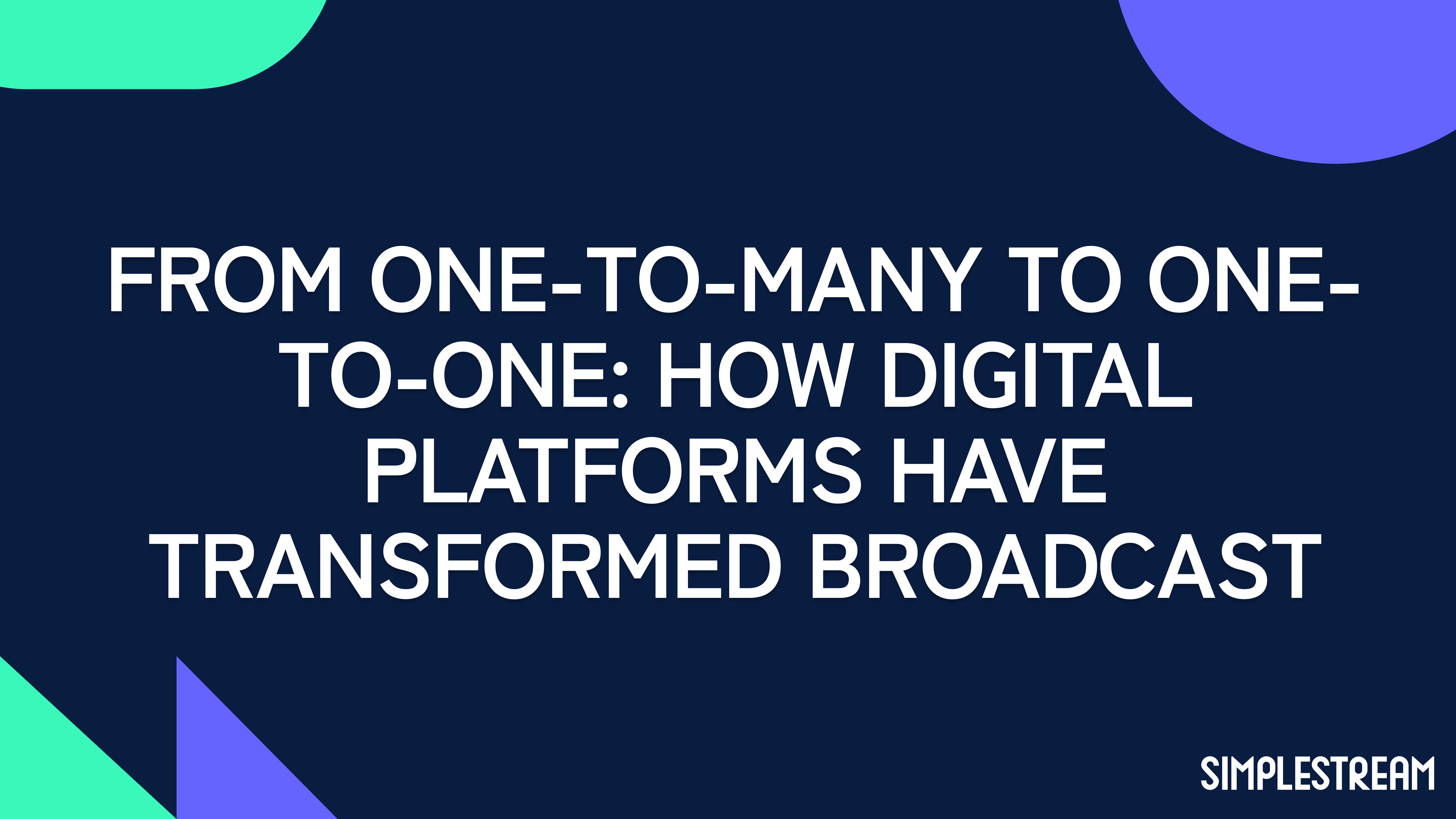Five ways to improve your sports streaming service beyond the field
A comprehensive guide to create a game-changing experience for your sports fans, on every screen. Read on
In the dynamic world of sports streaming, mastering the game requires a strategic playbook that goes beyond the field. In the US alone, the projected number of digital live sport viewers is expected to exceed 90 million people in 2025 (26% increase). Plus, with streaming services such as Netflix deciding to capitalise on the expected surge of sports fans – as seen by the success of original series such as Formula 1: Drive to Survive and the (David) Beckham docuseries – the need to optimise your sports streaming service has never been more important.
In this guide, we unveil five game-changing steps that will help you to improve your sports streaming service. From turbocharging content delivery speed to perfecting monetisation strategies, discover how to captivate your current audiences and attract new eyeballs to stay ahead in the world of live sports streaming.

#1. Enhance content delivery speed: accelerate the action
Speed isn’t just for Formula 1 drivers. In fact, recently, the International Broadcasting Convention (IBC) confirmed that the speed of content delivery (also referred to as latency) as a crucial factor that affects the quality of live event streaming. Imagine your customers huddled around a TV, eagerly watching action from the FIFA World Cup, hearing their neighbours celebrating goals 60 seconds ahead of them. This element alone could trigger cancellations, prompting customers to reconsider their subscription to your live sports streaming service.
The solution? Invest in a Content Delivery Network (CDN) with global coverage and robust server infrastructure to help decrease latency and minimise buffering time for your viewers. Ensuring stability and minimising latency will keep users satisfied as they enjoy streaming the real-time content promised to them.

#2. Optimise for multi-platform access: anytime, anywhere access
Accessibility is so much more than a buzzword. Modern consumers are busier than ever, but one person’s busy schedule doesn’t bring a live sporting event to a halt. Therefore, it is essential that consumers can live stream their favourite matches, competitions, or races in real time, anywhere they go.
An example of a streaming service that considers the need for accessibility is Sky Go, the service originally introduced by Sky in 2011, and subsequently revamped in 2019 to improve the accessibility of their sports content for users on the move. With Sky holding some of the most prestigious sports TV rights in the UK and the world, it comes as no surprise that Sky Go is still a benchmark for sports fans to consume content wherever they are.
The Solution? Ensure that your sports streaming service is accessible across multiple platforms. Optimise the user interface of your application for various devices, including smartphones, tablets, smart TVs, gaming consoles, with an eye on new technologies, devices, and preferred formats of consumption across younger generations of viewers. This will not only increase your app’s accessibility, but will also boost its appeal, making your product offering more attractive when compared to rival sports streaming services.
#3. Prioritise design excellence: elevate your fans' engagement
Fan engagement is key. In the competitive realm of sports streaming, aesthetics plays a pivotal role in user satisfaction. Taking a design-first approach is integral to creating an immersive and visually appealing streaming service app. A well-crafted user interface, intuitive navigation, and visually engaging elements enhance the overall enjoyment of your sports streaming app. By prioritising these elements, you not only capture the attention of users but also ensure a seamless and enjoyable journey through your platform, keeping them coming back for more.
The solution? Implement user-centric design principles, starting with gathering regular user feedback to help you tweak the interface of your sports platform. Proof that taking a design-first approach can turbocharge your live sports streaming app can be seen throughout our GAAGO case study.

#4. Refine your monetisation strategy: balance ads and user experience
Ad interruptions can be a pain point for consumers when using streaming services. In fact, some have even admitted that feel as if they are being held hostage to pay a fee to keep paid advertisements at bay whilst streaming their favourite content. This echoes the fact that the presence of too many ads can ruin user experiences and could ultimately cost viewers’ loyalty, especially on subscription-based services.
The Solution? Strike a balance between ad monetisation and UX by introducing a premium subscription tier that offers minimal ad interruptions. This grants users the option of freeing their minds from the shackles of advertisements and satisfy their desire for a seamless streaming experience, which could reduce user churn and through an improved streaming experience. Admittedly, some decision makers may fear taking this approach. YouTube took this approach by re-introducing YouTube Premium (formerly YouTube Red) earlier in 2015. A move which attracted 30 million paying members, globally, within the span of one year. In other words, people will pay to escape ads.
#5. Invest in data analytics: informed decision-making
Your audience’s behaviour is ever evolving. Understanding the pulse of your current audience and making adaptions is crucial for staying ahead in the competitive sports streaming landscape.
The solution? Data-driven optimisation. As NPAW’s Till Sudworth stated in one of our Beyond the Stream podcast episodes, you will need to start leveraging data properly. Re-considering which KPIs and data you are tracking is a great starting point, as this can equip your team with the user insights required to make the necessary changes that keep your users hooked to your sports streaming service. Alternatively, directly asking your consumers what they enjoy or dislike about your platform could also be an effective way to improve it.

Conclusions
Congratulations! You've now unlocked the winning playbook to propel your sports streaming platform to new heights. By implementing these game-changing strategies, you're set to captivate audiences, keep your audience satisfied, and stay ahead in the competitive realm of sports streaming.
Here’s a re-cap of each step that you’ll need to take:
- Enhance content delivery speed: Invest in a CDN and robust server infrastructure to reduce latency and improve the user experience.
- Optimise for multi-platform access: Make your service accessible across as many devices as possible. Specifically catering to new technological developments and shifts in user preferences.
- Prioritise app design: Implement user-centric principles and gather regular feedback to enhance engagement and user satisfaction.
- Tweak your monetisation strategy: Where applicable, use ads in moderation to provide a better viewing experience for your users.
- Invest in data analytics: Change the way that you leverage data to make informed decisions that will result in higher levels of user satisfaction.
Click here to learn more about how some of these steps helped us revamp the live sports streaming app for Ireland’s largest sports organisation, GAAGO.


